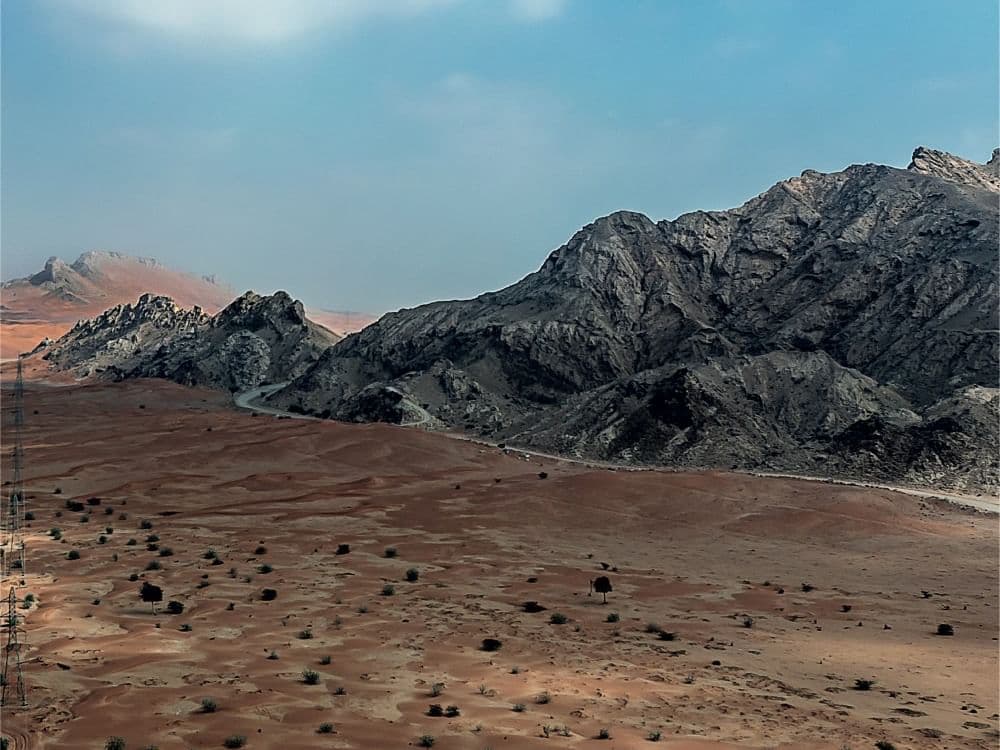
Unveiling 210,000 Years of Human History
Ashik Islam, Special Correspondent: The Faya Palaeolandscape in Sharjah stands as one of Arabia’s most scientifically significant prehistoric archaeological sites, and it remains a pivotal contributor to UNESCO’s Human Evolution, Adaptations, Dispersals and Social Developments (HEADS) program. For eleven years, Faya has been vital in expanding our global knowledge of how early humans migrated, adapted, and survived in desert settings.
This long-standing collaboration between Sharjah and the UNESCO HEADS program has positioned Faya as a global reference point for palaeoanthropology and archaeology, putting the UAE at the forefront of international scientific dialogue on human origins. The site’s remarkable, continuous record of over 210,000 years of human habitation makes it an indispensable part of the unfolding narrative of early human life in Southeast Arabia.
“Faya’s recognition in the HEADS programme for more than a decade is a testament to the UAE’s commitment to safeguarding its ancient heritage,” said Sheikha Bodour bint Sultan Al Qasimi, the official ambassador for Faya Palaeolandscape ongoing UNESCO World Heritage nomination.
“Sharjah has never viewed archaeology as merely a glimpse into the past, but as a vital part of our national identity and a platform for international cultural dialogue. Faya stands as evidence of how Sharjah combines scientific research with cultural vision, elevating the emirate as a leading contributor to global heritage. The site strengthens our cultural identity, supports cutting-edge research, and invites the world to explore how deeply rooted our region is in the story of human civilisation.”
According to Eisa Yousif, Director-General of the Sharjah Archaeology Authority (SAA), Faya has played a pivotal role in shaping international scientific discourse on early human life.
“Faya has long been a cornerstone in the global understanding of how early humans adapted, survived, and evolved in arid landscapes,” he said.
Beyond its regional significance, the property contributes to a larger global understanding of how early humans navigated survival, resource management, and social development in some of the harshest conditions on Earth. The sediment layers and preserved palaeoenvironmental features at Faya have made it a key site for understanding water availability, vegetation distribution, and climatic shifts during the Late Pleistocene and Holocene epochs.
These findings offer invaluable insight not only into human resilience but also into wider environmental transformations that shaped early civilisations.
Faya is part of key sites recognised by the UNESCO HEADS programme for their critical contributions to human evolutionary studies, including Klasies River Caves, Border Cave and Wonderwerk Cave in South Africa, and the Tchitundo-Hulu Rock Art Site in Angola. What distinguishes Faya, however, is its location within the Arabian Peninsula – a region previously understudied in global narratives of human migration. Faya is now helping reshape that narrative, anchoring Arabia as a key locus in the shared history of species.
In support of this global effort, Dr. Knut Bretzke, one of the lead researchers on the Faya site, recently presented the findings and significance of the landscape at a UNESCO HEADS programme meeting in Cairo, underscoring the international importance of the site and Sharjah’s continued leadership in heritage-based research.
“Even as the Faya World Heritage nomination advances, its legacy is already secure. This site is a crucial hub for scientific inquiry, fostering international cooperation and inspiring national pride. Faya powerfully demonstrates to the world that humanity’s oldest answers aren’t merely inscribed in rock; they’re remarkably preserved within the earth.”







